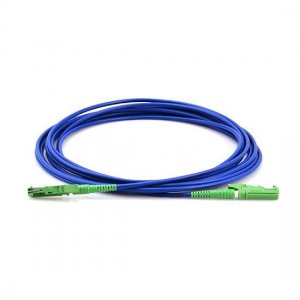
# Armored Fiber Cable: Enhanced Protection for High-Speed Data Transmission
## Introduction to Armored Fiber Cables
In today’s fast-paced digital world, reliable and secure data transmission is more critical than ever. Armored fiber cables have emerged as a robust solution for protecting delicate fiber optic strands in challenging environments. These specialized cables combine the high-speed capabilities of traditional fiber optics with enhanced physical protection, making them ideal for demanding applications.
## What Makes Armored Fiber Cables Different?
Unlike standard fiber optic cables, armored fiber cables feature additional protective layers that shield the delicate glass fibers from various environmental and mechanical threats. The key components include:
– Inner fiber optic core (single-mode or multi-mode)
– Protective buffer coating
– Strength members (typically aramid yarn)
– Metal or non-metallic armor layer
– Outer jacket material
## Types of Armored Fiber Cables
### 1. Interlocking Armored Cables
These cables feature a corrugated steel tape that wraps around the cable in an interlocking pattern, providing excellent crush resistance while maintaining flexibility.
### 2. Double-Jacketed Armored Cables
With an additional protective layer between the armor and outer jacket, these cables offer superior protection against moisture and chemical exposure.
### 3. Non-Metallic Armored Cables
Using materials like Kevlar or fiberglass instead of metal, these cables are ideal for environments where electrical interference is a concern.
## Key Benefits of Armored Fiber Cables
### Enhanced Durability
The armored layer provides exceptional protection against:
– Crushing forces
– Rodent bites
– Construction damage
– Extreme temperatures
### Improved Security
Armored cables are more resistant to:
– Tampering
– Unauthorized access
– Physical sabotage attempts
### Long-Term Reliability
With their robust construction, armored fiber cables offer:
– Longer service life
– Reduced maintenance requirements
– Consistent performance in harsh conditions
## Applications of Armored Fiber Cables
Armored fiber cables find use in numerous demanding environments:
### Industrial Settings
Keyword: armored fiber cable
– Manufacturing plants
– Oil and gas facilities
– Mining operations
### Outdoor Installations
– Underground conduits
– Direct burial applications
– Aerial installations
### High-Security Areas
– Government facilities
– Military installations
– Financial institutions
## Installation Considerations
When deploying armored fiber cables, professionals should consider:
– Proper bending radius to prevent damage
– Appropriate termination techniques
– Grounding requirements for metallic armor
– Environmental factors (temperature, moisture, etc.)
– Future maintenance and accessibility
## Comparing Armored vs. Non-Armored Fiber Cables
Feature | Armored Fiber Cable | Standard Fiber Cable
Physical Protection | Excellent | Basic
Crush Resistance | High | Low
Rodent Protection | Yes | No
Installation Flexibility | Moderate | High
Cost | Higher | Lower
Lifespan | Longer | Standard
## Future Trends in Armored Fiber Technology
The armored fiber cable market continues to evolve with:
– Lighter weight armor materials
– Improved flexibility without compromising protection
– Enhanced fire-resistant coatings
– Smart armor with embedded sensors
– Eco-friendly armor materials
## Conclusion
Armored fiber cables represent a significant advancement in protecting critical data transmission infrastructure. By combining the speed and bandwidth of fiber optics with robust physical protection, these cables ensure reliable performance in even the most challenging environments. As data demands continue to grow and installations become more complex, armored fiber solutions will play an increasingly vital role in maintaining secure, high-speed communication networks worldwide.